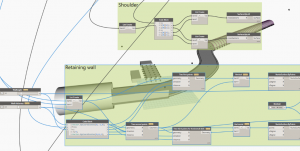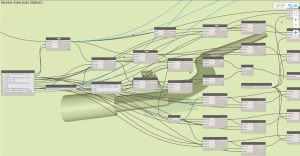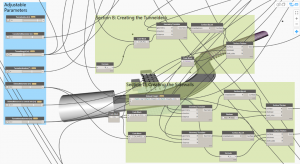Challenges:
The relationship between highway pavement and traffic volume in a road system is complex and interdependent. The traffic volume is a major factor that affects the wear and tear of highway pavement. Higher traffic volume means more vehicles using the road, which leads to increased stress on the pavement and can result in faster deterioration.
Traffic volume and societal factors are closely related and can have a significant impact on each other.
- Traffic volume affects societal factors: Increased traffic volume can lead to congestion, which can cause air pollution, increased noise levels, and increased travel time, leading to increased stress and reduced quality of life.
- Societal factors affect traffic volume: Societal factors, such as population growth, urbanization, and changes in employment patterns, can all impact traffic volume. For example, in large-crowded cities, transportation demands are higher, which might cause increased traffic volume if not solved properly.
Integration of Parametric Models:
Integrating different transportation infrastructure models such as highways, airports, tunnels, and retaining walls into a single system would result in a comprehensive transportation network that could improve the efficiency and safety of the transportation system.
Highways are the backbone of surface transportation and play a critical role in connecting people and destinations. Airports serve as hubs for air transportation and also play a vital role in connecting people and goods globally. Tunnels provide an alternative mode of transportation, allowing vehicles to pass underneath obstacles such as mountains, rivers, or city centers. While retaining walls are used to maintain the stability of slopes and prevent erosion.
By integrating these different transportation models, the transportation network would provide multiple options for travel, and reduce congestion and travel time. For example, the integration of highways, tunnels, and airports would provide a seamless connection between surface transportation, air transportation, and underground transportation. Additionally, the integration of retaining walls into the system would help to ensure the stability of slopes and prevent erosion, improving the safety and reliability of the transportation network.
This integrated transportation system could be used for various purposes such as passenger transportation, freight transportation, emergency services, and military operations. Integrating different transportation infrastructure models into a single system has the potential to greatly improve the efficiency, safety, and sustainability of the transportation network, providing multiple options for travel and supporting various transportation initiatives.
High-Performance Criteria:
High-performance criteria for road infrastructure include the following:
- Safety: Road infrastructure must be designed and built to provide a safe and secure environment for drivers, passengers, and other road users. This includes features such as well-designed intersections, adequate lighting, and clear road markings.
- Capacity: Road infrastructure must be able to accommodate the volume of traffic that it is expected to carry. This means that roads must be wide enough to accommodate multiple lanes of traffic, have sufficient space for vehicles to maneuver, and be designed to manage traffic flow effectively.
- Cost-effectiveness: Road infrastructure must be designed and constructed in a cost-effective manner, while still meeting all the performance criteria. This requires careful planning, design, and construction, as well as the use of innovative materials and techniques.
Modeling:
The final parametric design was created using Dynamo.
Interfaces
I) Retaining walls are used in tunnel construction:
A parametric model of a retaining wall is designed in this model, where we can adjust the height and thickness of the wall according to the support needed as follows.
- a) Stability: Retaining walls support the sides of the tunnel and prevent collapse. They are necessary to ensure the stability of the tunnel and to protect it from environmental conditions such as soil erosion or landslides.
- b) Soil Pressure: In some cases, the soil surrounding a tunnel can put a lot of pressure on the walls, especially if the soil is loose or wet. Retaining walls help to distribute this pressure and prevent the tunnel from collapsing.
- c) Excavation Support: During the construction of a tunnel, the retaining walls can serve as temporary support for the excavation. They help keep the excavation from collapsing, which can be a major safety hazard for workers.
- d) Ground Water Control: Retaining walls are also used to control groundwater, which can seep into the tunnel and cause damage. The walls help keep the water out and prevent flooding.
Retaining walls are an important aspect of tunnel construction and play a crucial role in ensuring the safety and stability of tunnels.

II) Gas stations near highways:
Highways are major transportation routes, and gas stations near highways provide convenient access for travelers. This makes it easier for drivers to fill up their tanks and continue their journeys without having to detour from the highway. Highways often see a high volume of traffic, which means that there is a large demand for fuel from drivers. Gas stations located near highways can meet this demand and attract a large customer base. Gas stations near highways are usually located on exits or near interchanges, which makes them easily accessible for drivers. This helps ensure that drivers can quickly and safely access fuel when they need it.

III) A highway through tunnels:
Geographical Limitations, the terrain or geography of an area may make it necessary to build two tunnels instead of one. For example, a mountain range or river might be in the way, and building two tunnels can provide a more direct route.
The tunnel and highway interface system refer to the integration of a highway or expressway with a tunnel, which is an underground passage designed for vehicles to travel through. This provides safe and efficient access for vehicles between the highway and the tunnel, as well as regulates the flow of traffic and prevents congestion. The design of this interface system varies depending on the specific needs of the location, such as the volume of traffic, the terrain, and the surrounding infrastructure. Some common components of a tunnel and highway interface system are Entrances and exits, Ventilation systems, Traffic management systems, and Emergency systems.
The design and implementation of a tunnel and highway interface system is a complex and multi-disciplinary process that requires expertise in fields such as engineering, transportation planning, and traffic management.
Thank you for reading! In case you are interested in knowing more about the design and ontology, feel free to download the OWL and Dynamo files!
